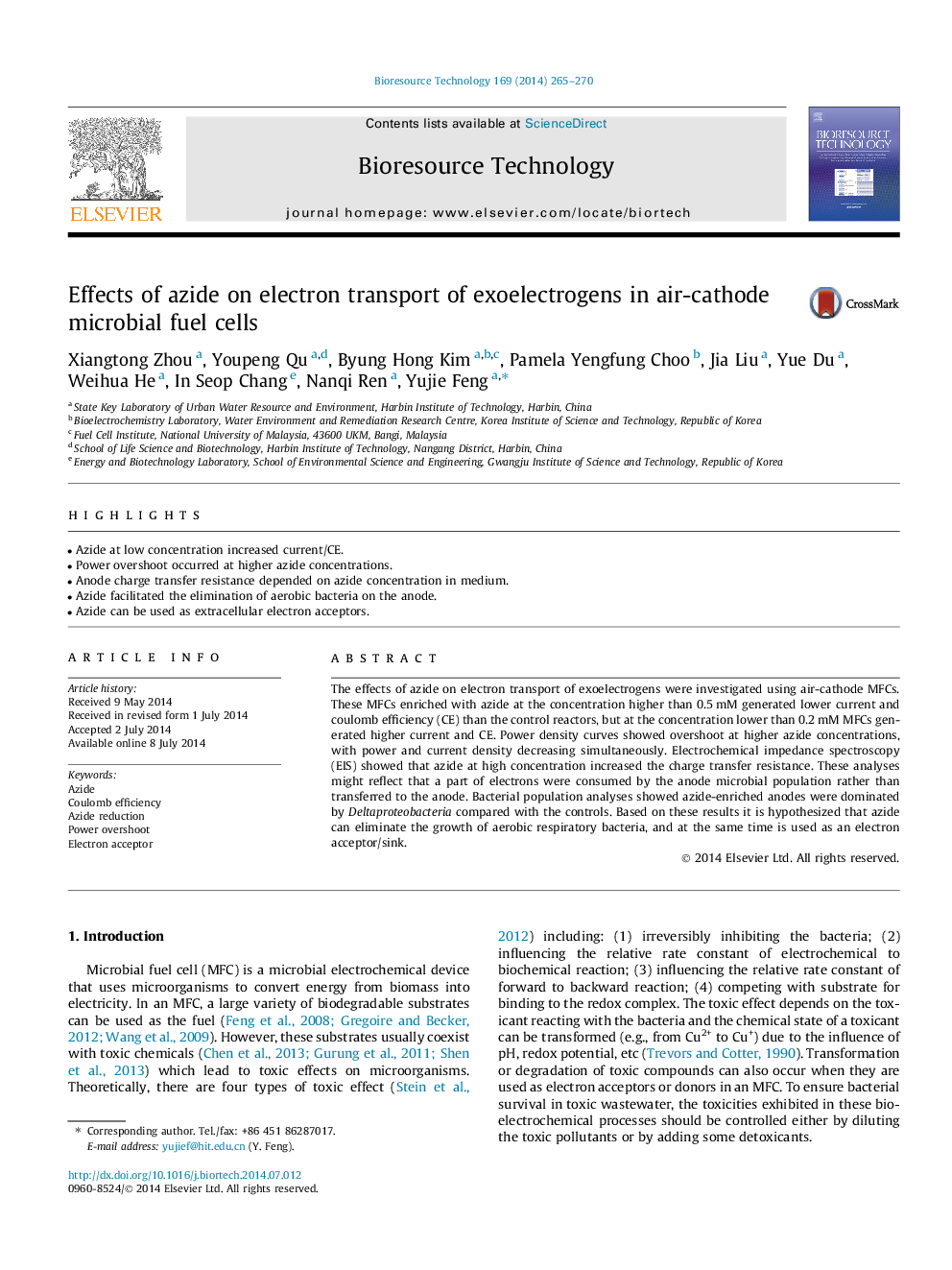| کد مقاله | کد نشریه | سال انتشار | مقاله انگلیسی | نسخه تمام متن |
|---|---|---|---|---|
| 680640 | 1459974 | 2014 | 6 صفحه PDF | دانلود رایگان |
• Azide at low concentration increased current/CE.
• Power overshoot occurred at higher azide concentrations.
• Anode charge transfer resistance depended on azide concentration in medium.
• Azide facilitated the elimination of aerobic bacteria on the anode.
• Azide can be used as extracellular electron acceptors.
The effects of azide on electron transport of exoelectrogens were investigated using air-cathode MFCs. These MFCs enriched with azide at the concentration higher than 0.5 mM generated lower current and coulomb efficiency (CE) than the control reactors, but at the concentration lower than 0.2 mM MFCs generated higher current and CE. Power density curves showed overshoot at higher azide concentrations, with power and current density decreasing simultaneously. Electrochemical impedance spectroscopy (EIS) showed that azide at high concentration increased the charge transfer resistance. These analyses might reflect that a part of electrons were consumed by the anode microbial population rather than transferred to the anode. Bacterial population analyses showed azide-enriched anodes were dominated by Deltaproteobacteria compared with the controls. Based on these results it is hypothesized that azide can eliminate the growth of aerobic respiratory bacteria, and at the same time is used as an electron acceptor/sink.
Journal: Bioresource Technology - Volume 169, October 2014, Pages 265–270
